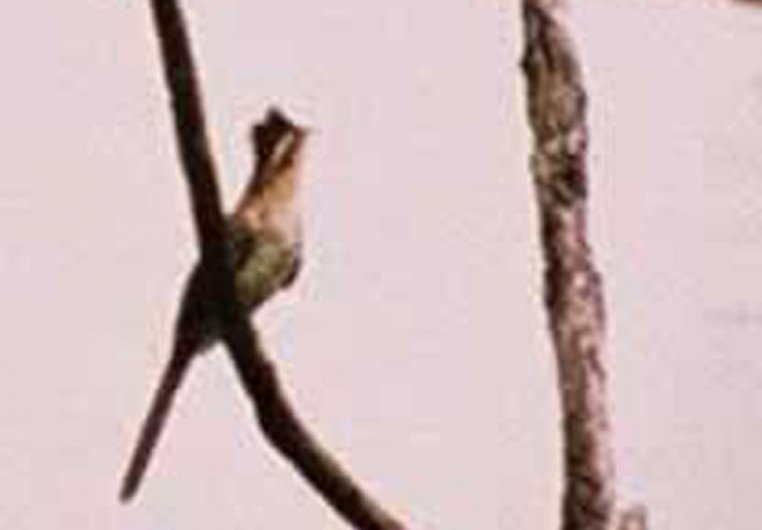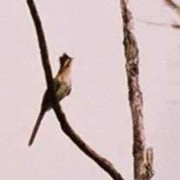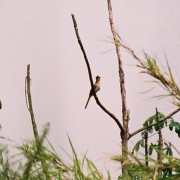Biodiversity
 Striped Cuckoo
Tapera naevia | Linnaeus, 1766
Striped Cuckoo
Tapera naevia | Linnaeus, 1766

Vocalization

Characterization: Small to medium-sized species measuring about 29cm in length. It has a dark-brown tuft on its head, which may be spiked, and a relatively long tail, with light and dark feathers. The hatchlings have strong beaks and large yellow spots on their upper sides. It is best identified through its singing, as it is hard to see.
Distribution: Present throughout Brazil and from Mexico to Bolivia and Argentina.
Habitat: Fields with scattered shrubs and trees, clearings and entangled branches on river banks.
Habits: A diurnal, solitary species, well known for its singing (reminiscent of the word "saci," which earned it its popular name).
Diet: Essentially carnivorous, eating grasshoppers, barnacles, spiders, millipedes, etc.
Breeding: It lays 1-2 eggs in the nests of other birds (a parasite species), such as the Yellow-chinned Spinetail (Certhiaxis cinnamomea) and furnariidiae (Synallaxis spixi, S. albascens, S. frantalis, Phacellodomus rufifrons, and P. ruber); the hatchlings are also raised by "foster" family.
In the UFRA area: This species of bird had an average spatial distribution, being seen in the wetlands with herbaceous plants, wetlands with riparian forests, in native forests, in drainage ditches, and in fields in spontaneous regeneration. It is considered little frequent, as it was spotted only 11 times.





